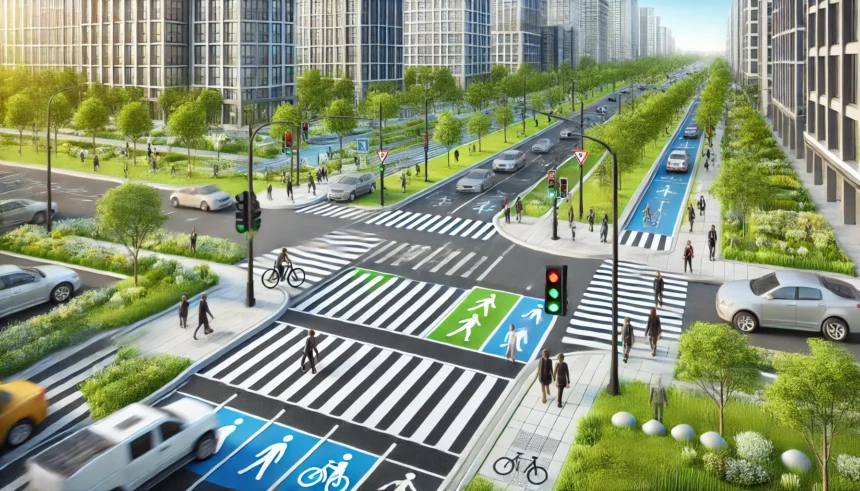Key Takeaways:
- Understand the importance of pedestrian safety in urban areas.
- Learn practical strategies to minimize pedestrian accidents.
- Discover how community involvement can enhance pedestrian safety.
The Current Landscape of Pedestrian Safety
Navigating modern cities presents many challenges for pedestrians, who must remain vigilant amidst constant movement from vehicles, cyclists, and other walkers. Today’s urban landscapes are bustling, with traffic lights, crosswalks, and signals guiding the flow. Yet, despite these measures, pedestrian accidents remain a significant concern. The necessity for awareness and safety has become increasingly pressing in light of the statistics revealing this issue’s depth. And while these statistics can be daunting, they highlight crucial areas for improvement.
When considering solutions, engaging the services of a pedestrian accident attorney can be invaluable in seeking justice and guidance following an incident. Accident readiness is part of creating a safer environment for everyone. Pedestrian fatalities have been climbing, which not only causes heartbreak for individuals but also signifies a societal issue needing urgent attention.
Why Pedestrian Safety is Crucial
Pedestrian safety reaches far beyond the immediate impact on victims and their families. When people feel unsafe walking, it affects community health by discouraging walking—a vital, natural form of exercise. Economic implications are severe, with each accident generating significant medical costs and impacting productivity. Nevertheless, solutions do exist. Municipalities can collectively tackle these issues by developing infrastructures prioritizing pedestrian rights and well-being.
The stories from towns and cities worldwide, from metropolitans to quieter suburbs, share common threads of tragedy and resilience. When examining these incidents, the importance of systemic changes becomes apparent. Public spaces can be reshaped to provide safer pathways, and policies can be reformed to ensure pedestrian safety becomes a centerpiece of urban planning strategies.
Practical Strategies for Reducing Pedestrian Accidents
- Dedicated crosswalks and pedestrian-only zones are simple yet powerful tools for reducing accidents. By giving pedestrians clear and safe navigation spaces, we can significantly decrease the chances of accidents occurring.
- Visibility improvements, such as reflective clothing for pedestrians and enhanced street lighting, allow pedestrians and drivers to better notice each other, especially during evening hours and in adverse weather conditions.
- Integrating technological advancements in vehicles, like pedestrian detection systems, can alert drivers to crossing individuals. Such systems are becoming more sophisticated in identifying potential hazards, even in challenging environments.
The Role of Government and Urban Planning
Governments and urban planners are pivotal players in creating pedestrian-friendly cities. They can dramatically enhance safety by implementing traffic-calming measures, establishing extensive pedestrian pathways, and using signage that alerts drivers to areas with high foot traffic. Strategic plans that have yielded positive results in different international cities; lessons from these case studies can be adapted to fit unique local contexts.
Effective policies can transform streetscapes, making them safer and more pleasant for living and commuting. By considering pedestrian needs in their initial designs, urban planners contribute to long-lasting solutions that address current and future safety concerns, exponentially reducing the likelihood of accidents.
Community Involvement in Pedestrian Safety
A community’s involvement in safeguarding its pedestrians cannot be overstated. Through collaborative efforts, community members can lead initiatives, such as neighborhood watch programs, that highlight local safety issues. Residents can voice their concerns by attending or organizing community meetings, working with local governments, and implementing targeted safety campaigns.
Communities prioritizing their members’ well-being create cities that reflect collective pride and responsibility. Efforts at the grassroots level may range from fundamental petitions for more crosswalks or better lighting to more extensive campaigns advocating for policy changes at a municipal level. Such actions foster a safer, more connected community that inherently values pedestrian safety.
Educational Campaigns and Awareness
Raising awareness through comprehensive educational campaigns is another effective strategy to enhance pedestrian safety. These campaigns can be multifaceted, targeting everyone from young children to elderly adults and offering practical advice tailored to specific demographics. Schools, community centers, and local government bodies can spearhead these efforts, leading workshops and sessions that inform and inspire.
For instance, drivers can be educated on the causes and consequences of pedestrian accidents, promoting greater empathy and caution. Similarly, pedestrians can learn defensive walking techniques and ways to maintain personal visibility. Through ongoing education, communities can alter behaviors, fostering a culture prioritizing safety and mutual respect between walking and driving.
Future Trends in Pedestrian Safety
Looking ahead, significant technological advancements promise a safer future for pedestrians. Autonomous vehicles, which are rapidly evolving, hold the potential to drastically reduce human error on roads. Bright traffic signals and sensors could provide real-time data, adjusting timings based on pedestrian flow, thus reducing wait times and minimizing jaywalking temptations.
Additionally, wearable technology focused on pedestrian safety is emerging. Devices that enhance visibility or communicate with vehicles could soon become standard gear for those who frequently walk in urban settings. These innovations pave the way for safer, more efficient cityscapes that accommodate growing populations and urban sprawl.
Conclusion: Our Shared Responsibility
Ultimately, pedestrian safety remains a shared responsibility that involves everyone—from policymakers to everyday citizens. By combining proactive measures, public education, technological innovation, and community action, we can create harmonized environments where pedestrians and vehicles coexist. Let us all actively advocate, participate, and pave the way for safer streets where walking is as secure as joyful. This shared effort will yield long-lasting impacts, benefiting society as a whole.






